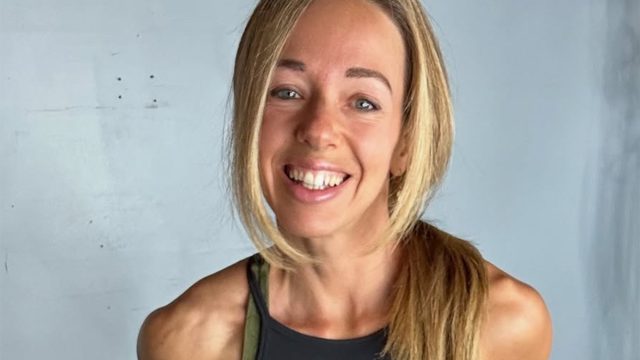5 Protein Diet Traps Women Over 35 Need to Avoid for Real Fat Loss

Are you prioritizing protein intake but not losing the weight you hoped to? You might be making a common – but fixable – mistake. Sarah Bouchard is a Nutrition Coach & Educator who helps women over 35 "ditch diet confusion & simplify nutrition" for "Sustainable fat loss + healthy body composition," she explains in her Instagram bio. In a new social media post she reveals some diet faux pas you might be committing. "5 dieting traps that are stalling your fat loss and body recomp even though you are eating high protein," she writes. After revealing each "trap," she goes on to suggest what to do instead.
Hitting a Protein Target Without Considering Quality or Distribution
Her first trap? Hitting a protein target without considering quality or distribution. "Simply consuming 'enough' protein isn't doing it. The quality, density, & timing of protein intake directly impact muscle retention & satiety," she says.
What to Do Instead
The solution? "Choose quality proteins & distribute protein intake more evenly across meals to stimulate muscle synthesis multiple times per day—not just at dinner," she writes.
RELATED: 10-Min Walking Workout Burns Fat at Home, Says Coach
Setting Calories Too Low
The next mistake is setting calories too low. "Severe calorie restriction reduces total daily energy expenditure (TDEE). Your body compensates by decreasing how much you move & making you more energy-efficient, which slows fat loss," she says.
What to Do Instead
The solution? "Keep your deficit modest—just below maintenance," she recommends. "Prioritize protein & fiber to increase the thermic effect of food (TEF) & satiety. Increase daily movement like walking to support TDEE rather than reducing 'calories in' even further."
Overemphasizing Protein While Neglecting Fiber & Carbs
Mistake three is overemphasizing protein while neglecting fiber and carbs. "Protein is just one part of the satiety equation. A high-protein diet without fiber-rich carbohydrates can slow digestion, impact gut health, and leave you feeling ravenous," she says.
RELATED: 30 Best Protein Foods That Melt Fat Almost Instantly
What to Do Instead
Make sure you are balancing macros. "Ensure you're including fiber from fruits, vegetables, & starches at every meal to support digestion, blood sugar control, & satiety," she suggests.
Unrealistic Expectations
Another mistake is setting unrealistic expectations. "Fat loss takes time. If you've ever lost 5 lbs in a week on keto, it was likely water weight, not body fat. Quick results aren't sustainable, & constant weight fluctuations can be discouraging," she writes.
What to Do Instead
Her solution? "Shift focus from short-term outcomes to long-term consistency. Instead of chasing the scale, prioritize the behaviors that create fat loss—training, nutrition, & recovery," she says.
RELATED: 8 High-Protein Foods with Nearly Zero Calories That Melt Fat
Chronic Dieting
Her last mistake is chronic dieting. "Constantly being in a deficit can lead to metabolic adaptation, lack of nutrients, hormonal problems, and a higher risk of binge-restrict cycles," she points out.
What to Do Instead
She has a solution to the problem. "Periodize your deficit," she suggests. "Include diet breaks & consider calorie cycling to avoid diet fatigue and promote long-term adherence." And if you enjoyed this article, take advantage of these 15 Quick Ways to Lose Body Fat Percentage in a Week.




